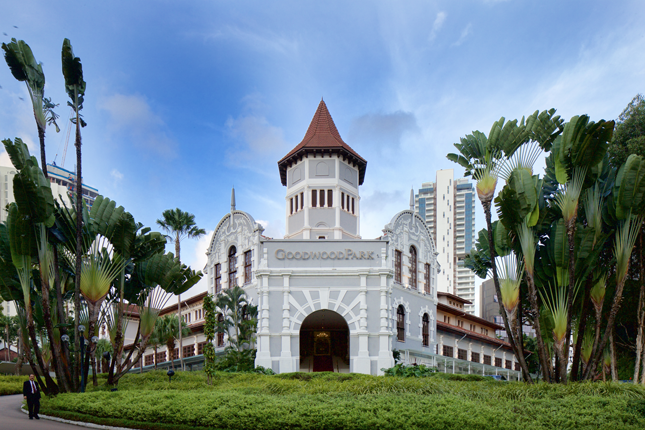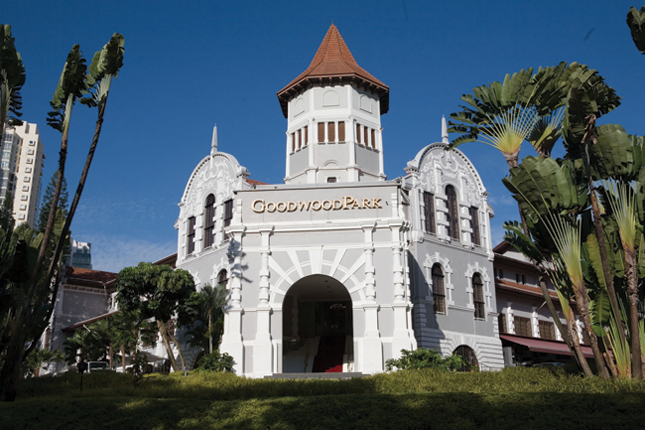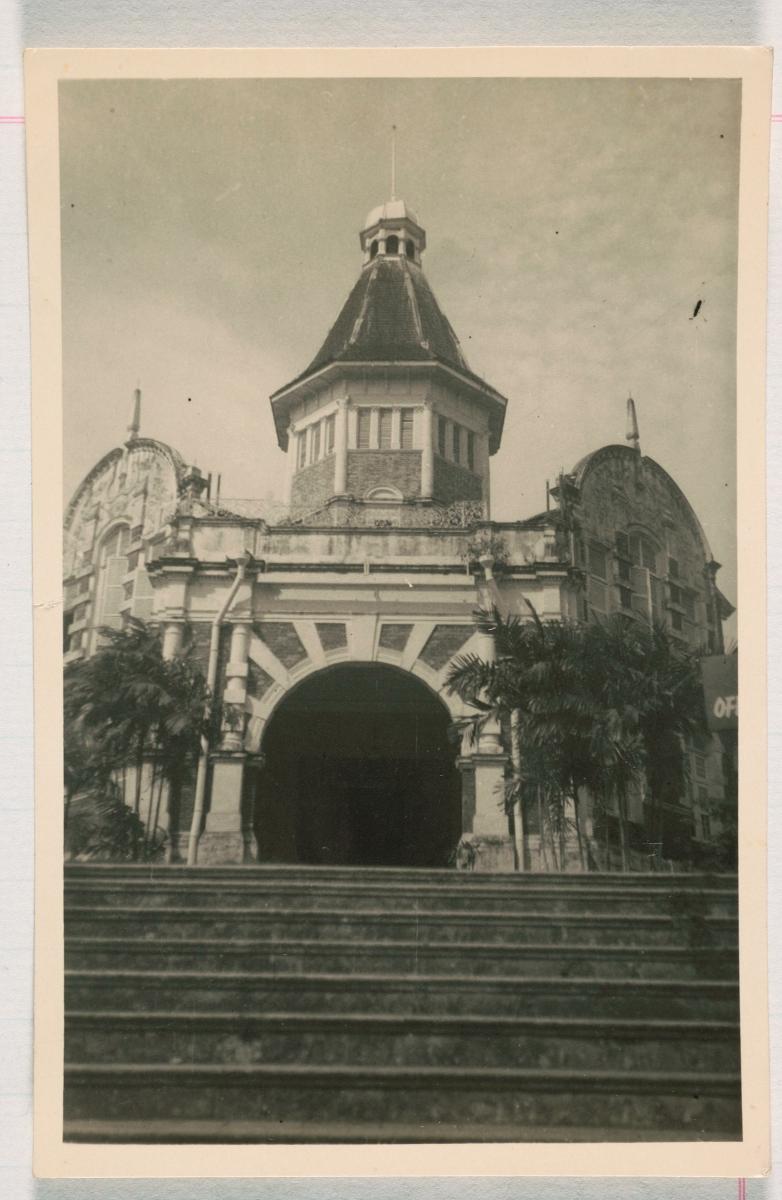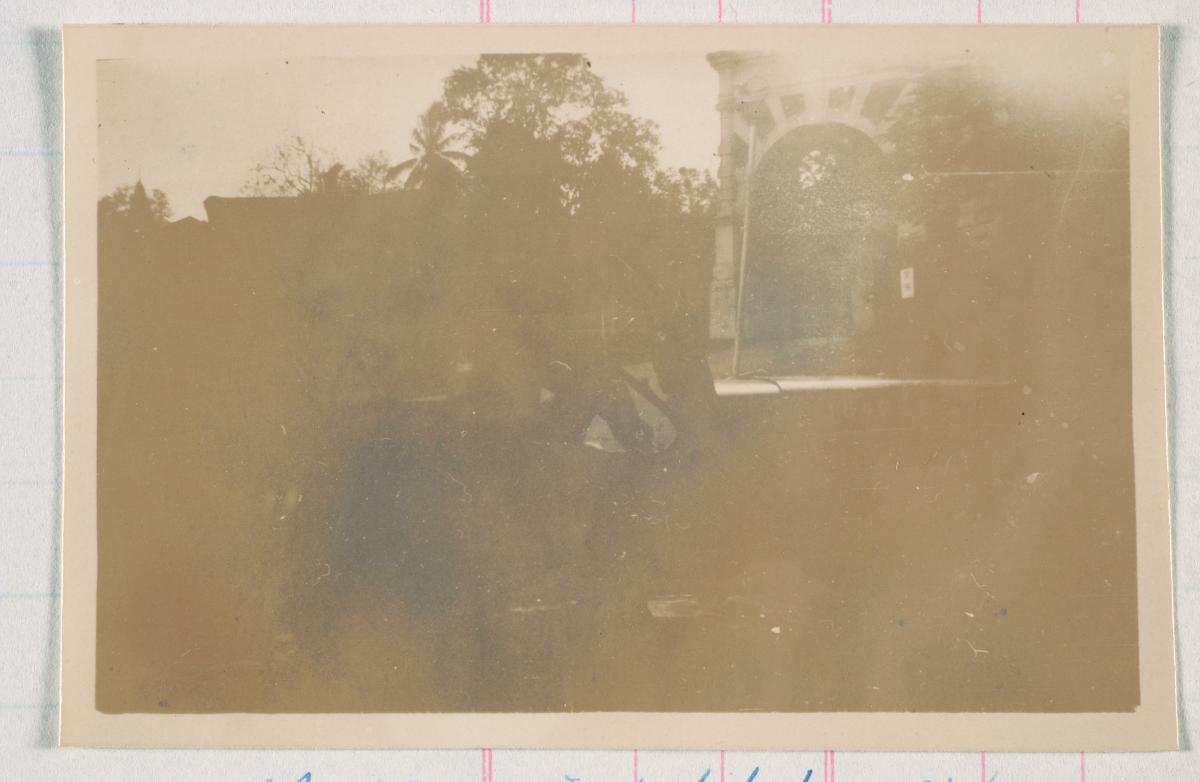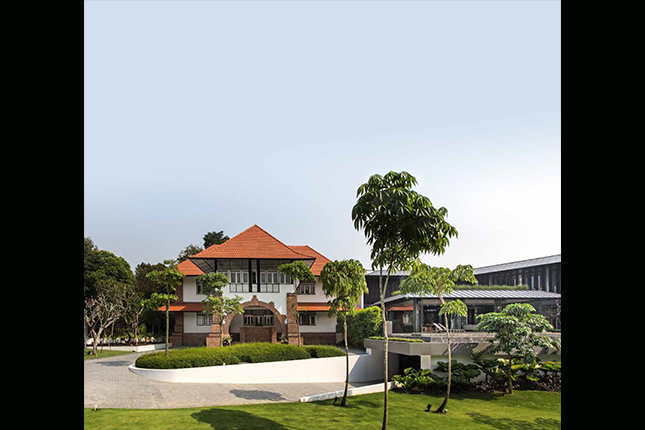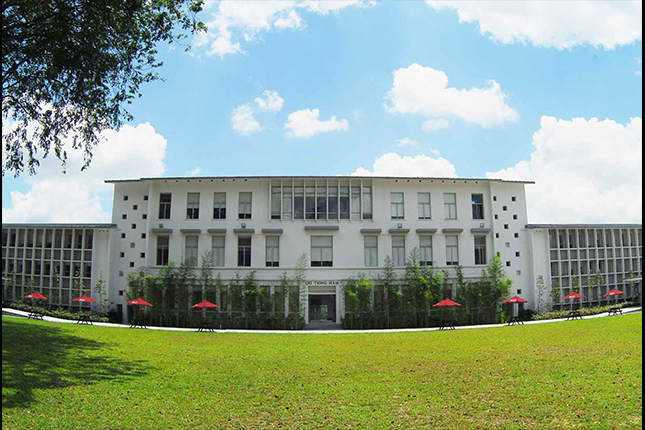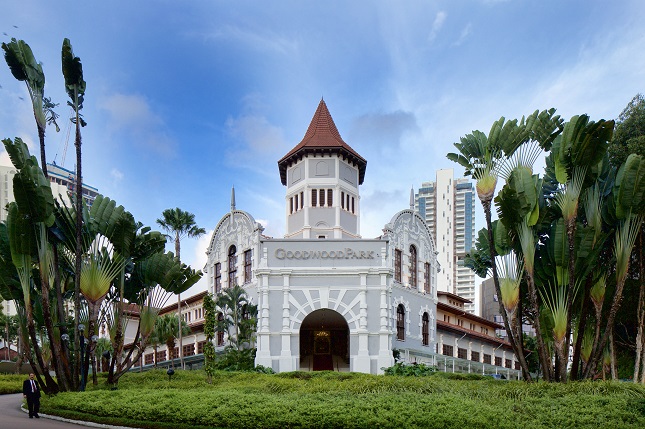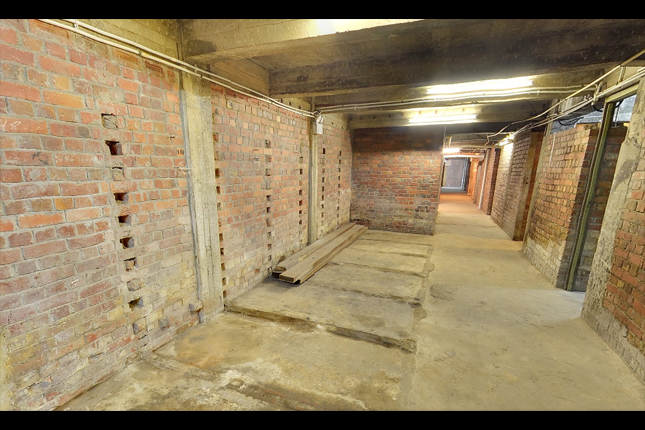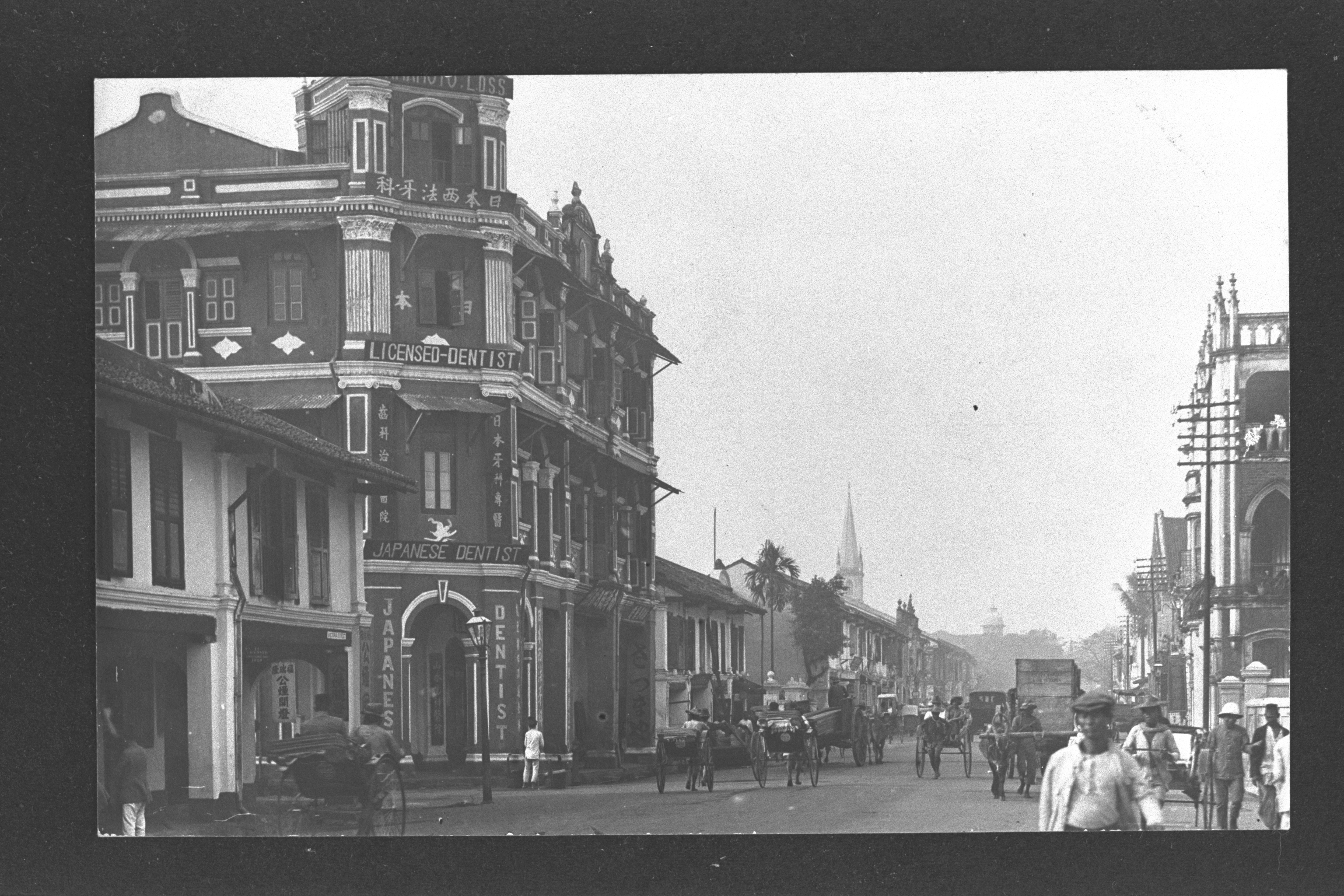The Tower Wing of the present-day Goodwood Park Hotel was home to the German Teutonia Club, one of the earliest European national clubs in Singapore. It is a prominent landmark in the Orchard area for its unique architecture. The charming structure serves as a reminder of the Germans’ contributions to trade in early colonial Singapore, and of the impact of the First World War on the local German community. Goodwood Park Hotel is also a monument to the flourishing hotel industry in Singapore during the colonial period and beyond.
Liedertafel
In the mid-nineteenth century, Germans arrived on the island to work for German trading houses and shipping firms. The first German social group was a Liedertafel, a male-voice choir which was founded by choral enthusiasts in the small German community in the 1850s. The group proved to be quite a sensation and was soon invited to perform in numerous charity concerts in Singapore. Otto Puttfarcken, a co-founder of Puttfarcken, Rheiner & Company, was a first tenor in the choir and one of its star singers. Other members included Arnold Otto Meyer, a partner of Behn, Meyer & Company established in 1840, and Franz Küstermann, who had been in Singapore since 1842.
Teutonia Club
On 28 June 1856, seven German merchants, including Meyer, Küstermann, and Puttfarcken, convened in a house on North Bridge Road behind the present-day Raffles Hotel and formally established Teutonia Club, the German club in Singapore. Six months after its founding, Teutonia Club moved to its second premises on Mount Elizabeth, which was then known as Blanche House.
The German community acquired a land parcel on Scotts Road in 1861 to erect a proper clubhouse. Regular musical recitals and ballroom dances were held at the Teutonia Club. In 1898, the local German community hosted a party for Prince Albert Wilhelm Heinrich of Prussia, who was also the younger brother of the German Emperor Wilhelm II. As the club membership grew, it became apparent that a larger clubhouse was necessary. An additional plot adjacent to the site was purchased to enlarge the compound, and construction of the new premises began in 1899.
The task of designing the new home for the Teutonia Club was assigned to Regent A. J. Bidwell of the well-known architectural firm Swan & Maclaren. Bidwell was also responsible for the final designs of Victoria Theatre and Victoria Concert Hall. On 21 September 1900, the building was officially opened as the Deutsches Haus, or German House, in the presence of Sir Frank Swettenham, then Acting Governor of the Straits Settlements. Many guests of different nationalities were also invited to this grand opening.
Confiscation of the Deutsches Haus
With the outbreak of the First World War in Europe, the British authorities in Singapore seized the Deutsches Haus and placed it under the control of the Custodian of Enemy Property. Members of the German community in Singapore either fled or were interned. The Singapore Volunteer Force later occupied the building and used it as their headquarters, from where they commandeered their operations against the mutineers during the Sepoy Mutiny in 1915.
From a Social Venue to a Hotel
Three successful Jewish brothers – Morris, Ezekiel, and Ellis Manasseh – bought over the property in 1918, together with five other houses behind it. The entire estate was renamed Goodwood Hall, after the famous Goodwood Racecourse in West Sussex, England. In the following years, the building became a popular venue for various gatherings, including talks, concerts, wedding receptions, and dances. Anna Pavlova, one of the greatest ballerinas in the world at that time from Russia, performed The Dying Swan with her troupe of 35 dancers in Goodwood Hall in 1922.
The Manessah brothers continued to develop the estate and finally transformed it into the elegant Goodwood Park Hotel in 1929, joining the ranks of colonial hotels in Singapore, such as Adelphi Hotel, Hotel de l’Europe (formerly on the site on the Former Supreme Court. Its iconic Tower Wing was eventually converted to house guestrooms.
Second World War
Goodwood Park Hotel suspended operations as a hotel during the Second World War and for a few years thereafter. The Japanese navy used the property as its headquarters during the Japanese Occupation (1942–1945). After the war, the headquarters of the Recovery of Allied Prisoners of War and Internees (RAPWI) was based in Goodwood Park Hotel. At the same time, the Army War Crime Office requisitioned the building and courtrooms were temporarily set up in the premises to conduct war crimes trials. The hotel resumed its operations in 1947 with the British army handing the building back to the pre-war owners.
In 1968, Tan Sri Khoo Teck Puat (邱德拔), a renowned Singaporean banker, bought over Goodwood Park Hotel. Since then, the hotel has undergone several phases of renovation and restoration. In the 1970s, plans were made to reconstruct an exact replica of the original tower pinnacle, which was insensitively removed by a previous owner. This was later abandoned due to cost and structural concerns, and a new pinnacle that resembles the original was built in its place.
Several notable personalities have graced the hotel with their presence and stayed there over the years. They include writer-philosopher and Nobel Laureate Sir William Golding (best known for his novel The Lord of the Flies), author Roald Dahl, boxing sensation Muhammad Ali, and actor Jackie Chan.
Architecture and Furnishings
Goodwood Park Hotel is located on elevated ground, which allows the building to stand out prominently. Its Tower Block exhibits elements of the Queen Anne Revival style, which became fashionable in Britain during the late nineteenth century. Principal features of this architectural style include brick pediments, towers, verandahs, and detailed textures – all of which can be seen in the building’s design. The front stairway leads up to the main entrance, which is topped by the impressive turret-like tower and flanked by two gable walls with semi-circular pediments covered in elaborate mouldings of leaves, flowers, and ribbons. Blocked architraves and rusticated walls add texture to the monument.
It is also suggested that the building might have been modelled after the castles in Germany’s Rhineland region which are characterised by tall, looming towers. This is plausible considering that the building was intended to be the home of the Teutonia Club when it was first constructed.
Goodwood Park Hotel Today
Today, Goodwood Park Hotel remains a luxurious heritage hotel. Only its Tower Block is gazetted as a National Monument.
Our National Monuments
Our National Monuments are an integral part of Singapore’s built heritage, which the National Heritage Board (NHB) preserves and promotes for posterity. They are monuments and sites that are accorded the highest level of protection in Singapore.




